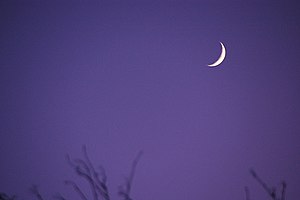It always amazes me how summer can just fly by, while the winter months drag on and on. September’s almost here. Hard to believe.
Lucky for us, the evenings are still generally warm and relatively comfortable, same for the early mornings. That certainly encourages me to spend a lot more “outside time” after dark.
At dusk about an hour after sunset on August 20-22, the waxing Moon will show its slender but increasing crescent. Looking W to SW, a very thin crescent is visible on the horizon. On successive nights, it will be higher in the sky, and larger. On August 21 it forms a striking sight with Mars above and to the left, Saturn above and to the right, and the star Spica below Saturn. Even if you happen to have light-polluted skies, you will be able to see all of these, as they are quite bright.
The Moon was new on August 17.
At dawn on August 31, Mercury is visible just above thehorizon to the E-NE, if you have a clear line of sight, about 20 minutes before sunrise. Directly below Mercury and to the right a little is the star Regulus. If you can see that, you are lucky to have such a clear view!
Neptune is at opposition and is highest in the sky on August 24. You need a telescope or binoculars to really get a good look.
Towards the end of August, Jupiter rises about 11:00 or midnight. The best time to view Jupiter is during early morning, when it is at its highest in the E or SE.
Venus’ rising time stays around 3:00 am all month.
Feel free to share your stargazing experiences here. I’d love to hear yours!

